Characteristic and Classification of Temperature Sensors and Detailed Description of Their Structure
Temperature sensor is composed of temperature sensor and detection circuit. Temperature sensors can be roughly divided into contact type and non-contact type from the point of view of use. The former is to let the temperature sensor directly contact the object to be tested to detect the change of the temperature of the measured object. The latter is to make the temperature sensor and the object to be tested away from a certain distance, and emit infrared rays to the object to be tested, thereby achieving the purpose of temperature measurement.
Traditional thermocouples, RTDs, thermistors, and semiconductor temperature sensors convert analog voltage or current signals through a certain interface circuit. Measurement control can be performed using these voltage or current signals. Integrating the analog temperature sensor with the digital conversion interface circuit becomes a digital temperature sensor with digital output capability. With the rapid development of semiconductor technology, semiconductor temperature sensors are gradually integrated with corresponding conversion circuits, interface circuits and various other functional circuits to form a powerful, accurate and inexpensive digital temperature sensor.
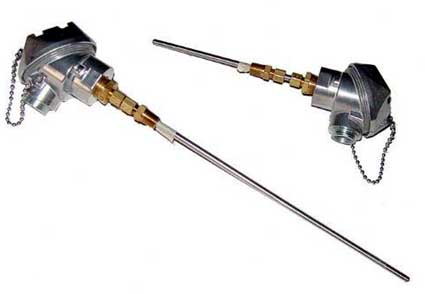
There are fiber optic sensors that utilize fiber propagation characteristics that vary with temperature or semiconductors with temperature; There is a sensor that utilizes a surface acoustic wave and an oscillation frequency of the vibrator as a function of temperature; An NQR sensor having an oscillating frequency that varies with temperature using a nuclear quadruple resonance; There is a magnetic temperature sensor that utilizes a sharp change in magnetic properties near the Curie temperature; Use liquid crystal or paint color to change the temperature of the sensor. The non-contact method measures the temperature of an object by detecting infrared rays in the photosensor, and has a quantum type that absorbs light by a semiconductor and a thermal type sensor that absorbs light and causes a temperature change. Non-contact sensors are widely used in contact temperature sensors, radiation thermometers, alarm devices, visitor informants, fire alarms, automatic doors, gas analyzers, spectrophotometers, resource detection, etc. Yaxun specializes in producing various temperature sensor series: Thermocouples, RTDs, bimetal thermometers, temperature transmitters, etc., welcome customers to choose.
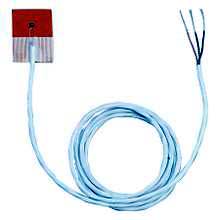
1. Temperature sensor thermal resistance temperature measurement principle and material
Temperature sensor Thermistor temperature measurement is based on the fact that the resistance value of a metal conductor increases as the temperature increases. Temperature sensor thermal resistance is mostly made of pure metal materials. At present, platinum and copper are the most widely used. In addition, temperature sensor thermal resistances have been fabricated using materials such as dian, nickel, manganese and tantalum. For example, Yaxun's PT100 temperature sensor includes a 100 ohm platinum resistance temperature probe.
2. Temperature sensor thermal resistance structure
(1) Mastery temperature sensor Thermal resistance Industry commonly used temperature sensor Thermal resistance temperature sensing element (resistance body). From the temperature measurement principle of the temperature sensor thermal resistance, the change of the measured temperature is measured directly by the change of the resistance of the temperature sensor. Therefore, changes in the resistance of various wires such as the lead wires of the temperature sensor's thermal resistance affect the temperature measurement. In order to eliminate the influence of the lead resistance, a three-wire system or a four-wire system is generally used.
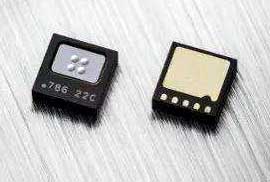
(2) Armored temperature sensor thermal resistance Armored temperature sensor Thermistor is a solid body composed of a temperature sensing element (resistor), a lead wire, an insulating material, and a stainless steel bushing. Its outer diameter is generally φ2~φ8mm, and the minimum is φmm.
Compared with the ordinary temperature sensor thermal resistance, it has the following advantages:
1, small volume, no air gap inside, thermal inertia, small measurement lag;
2, good mechanical properties, vibration resistance, impact resistance;
3, can be bent, easy to install
4, long service life
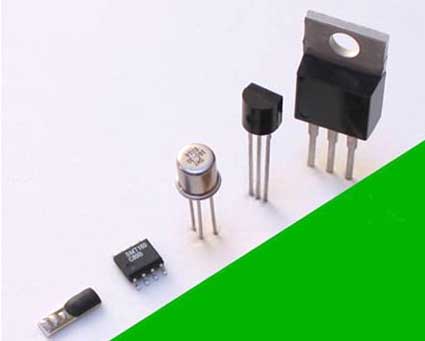
(3) The end face temperature sensor is an end face temperature sensing element which is wound by a specially processed resistance wire and is closely attached to the end face of the thermometer. Compared with the general axial temperature sensor thermal resistance, it can reflect the actual temperature of the tested end face more correctly and quickly, and is suitable for measuring the end face temperature of the bearing bush and other parts.
(4) Flameproof temperature sensor thermal resistance:
Explosion-proof temperature sensor RTD through a special structure junction box. The explosion of the explosive mixture inside the casing due to the influence of sparks or arcs is confined to the junction box, and the production site does not cause an explosion. Explosion-proof temperature sensor RTD can be used for temperature measurement in explosion-prone areas in the Bla~B3c class.
3. Composition of Temperature Sensor Thermal Resistance Temperature Measurement System
Temperature sensor Thermistor temperature measurement system generally consists of a temperature sensor thermal resistance, a connecting wire and a display instrument. The following two points must be noted:
1, Thermal resistance of temperature sensor must be the same as the scale number of display instrument.
2, In order to eliminate the influence of the change in the resistance of the connecting wire, a three-wire connection method must be used.
Thermocouples, thermistors, resistance temperature detectors (RTDs) and IC temperature sensors (see table below). The IC temperature sensor includes two types of analog output and digital output.
Thermocouples are widely used because they are very strong and not too expensive. There are many types of thermocouples that cover a very wide temperature range from -200 °C to 2000 °C.
Their characteristics are: Low sensitivity, low stability, medium accuracy, slow response, easy aging and drift at high temperatures, and non-linearity. In addition, the thermocouple requires an external reference.
RTD is extremely accurate and has moderate linearity. They are particularly stable and come in many configurations. But their maximum working temperature can only reach about 400 °C. They also have large TCs and are expensive (4 to 10 times that of thermocouples) and require an external reference source.
The analog output IC temperature sensor has a high degree of linearity (if an analog to digital converter or ADC can produce a digital output), low cost, high precision (about 1 [[%]]), small size and high resolution. Their shortcomings are limited temperature range (-55 ° C ~ +150 ° C) and require an external reference source
The digital output IC temperature sensor has a built-in reference source and their response speed is also quite slow (on the order of 100 ms). Although they inherently generate heat themselves, auto-shutdown and single-shot modes can be used to set the IC to a low-power state before measurements are needed, thereby minimizing self-heating.
Compared with thermistor, RTD and thermocouple sensors. The IC temperature sensor has high linearity, low system cost, integrated complex functions, a digital output, and temperature measurement in a fairly useful range.
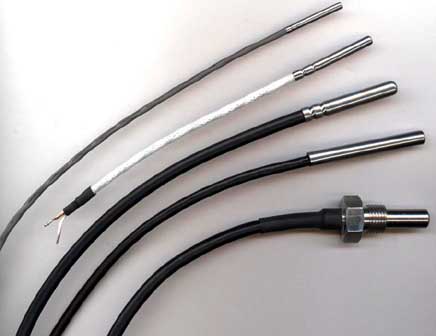
Traditional thermocouples, RTDs, thermistors, and semiconductor temperature sensors convert analog voltage or current signals through a certain interface circuit. Measurement control can be performed using these voltage or current signals. Integrating the analog temperature sensor with the digital conversion interface circuit becomes a digital temperature sensor with digital output capability. With the rapid development of semiconductor technology, semiconductor temperature sensors are gradually integrated with corresponding conversion circuits, interface circuits and various other functional circuits to form a powerful, accurate and inexpensive digital temperature sensor.

Temperature sensor characteristics
Temperature sensor is a device for detecting temperature. It is widely used in industrial and agricultural production, scientific research and life, etc. It has many types and develops rapidly. Non-contact is the measurement of the temperature of the object by measuring the infrared radiation emitted by the object's thermal radiation. It can be telemetry, which is not possible with the contact method. Contact temperature sensors include thermocouples, thermistors, and platinum resistors, which measure the temperature of an object using the characteristics of the thermoelectromotive force or resistance that varies with temperature. Widely used in household appliances, automobiles, ships, control equipment, industrial measurement, communication equipment, etc. In addition, there are some newly developed sensors, such as semiconductor integrated sensors that utilize semiconductor PN junction current/voltage characteristics as a function of temperature; Optical fibers are used to propagate properties that vary with temperature or semiconductors.There are fiber optic sensors that utilize fiber propagation characteristics that vary with temperature or semiconductors with temperature; There is a sensor that utilizes a surface acoustic wave and an oscillation frequency of the vibrator as a function of temperature; An NQR sensor having an oscillating frequency that varies with temperature using a nuclear quadruple resonance; There is a magnetic temperature sensor that utilizes a sharp change in magnetic properties near the Curie temperature; Use liquid crystal or paint color to change the temperature of the sensor. The non-contact method measures the temperature of an object by detecting infrared rays in the photosensor, and has a quantum type that absorbs light by a semiconductor and a thermal type sensor that absorbs light and causes a temperature change. Non-contact sensors are widely used in contact temperature sensors, radiation thermometers, alarm devices, visitor informants, fire alarms, automatic doors, gas analyzers, spectrophotometers, resource detection, etc. Yaxun specializes in producing various temperature sensor series: Thermocouples, RTDs, bimetal thermometers, temperature transmitters, etc., welcome customers to choose.

Application principle of temperature sensor thermal resistance
Temperature sensor Thermistor is the most commonly used temperature detector in the low temperature zone. Its main features are high measurement accuracy and stable performance. Among them, platinum thermal resistance has the highest measurement accuracy, and it is not only widely used in industrial temperature measurement, but also made into a standard reference instrument.1. Temperature sensor thermal resistance temperature measurement principle and material
Temperature sensor Thermistor temperature measurement is based on the fact that the resistance value of a metal conductor increases as the temperature increases. Temperature sensor thermal resistance is mostly made of pure metal materials. At present, platinum and copper are the most widely used. In addition, temperature sensor thermal resistances have been fabricated using materials such as dian, nickel, manganese and tantalum. For example, Yaxun's PT100 temperature sensor includes a 100 ohm platinum resistance temperature probe.
2. Temperature sensor thermal resistance structure
(1) Mastery temperature sensor Thermal resistance Industry commonly used temperature sensor Thermal resistance temperature sensing element (resistance body). From the temperature measurement principle of the temperature sensor thermal resistance, the change of the measured temperature is measured directly by the change of the resistance of the temperature sensor. Therefore, changes in the resistance of various wires such as the lead wires of the temperature sensor's thermal resistance affect the temperature measurement. In order to eliminate the influence of the lead resistance, a three-wire system or a four-wire system is generally used.

(2) Armored temperature sensor thermal resistance Armored temperature sensor Thermistor is a solid body composed of a temperature sensing element (resistor), a lead wire, an insulating material, and a stainless steel bushing. Its outer diameter is generally φ2~φ8mm, and the minimum is φmm.
Compared with the ordinary temperature sensor thermal resistance, it has the following advantages:
1, small volume, no air gap inside, thermal inertia, small measurement lag;
2, good mechanical properties, vibration resistance, impact resistance;
3, can be bent, easy to install
4, long service life

(3) The end face temperature sensor is an end face temperature sensing element which is wound by a specially processed resistance wire and is closely attached to the end face of the thermometer. Compared with the general axial temperature sensor thermal resistance, it can reflect the actual temperature of the tested end face more correctly and quickly, and is suitable for measuring the end face temperature of the bearing bush and other parts.
(4) Flameproof temperature sensor thermal resistance:
Explosion-proof temperature sensor RTD through a special structure junction box. The explosion of the explosive mixture inside the casing due to the influence of sparks or arcs is confined to the junction box, and the production site does not cause an explosion. Explosion-proof temperature sensor RTD can be used for temperature measurement in explosion-prone areas in the Bla~B3c class.
3. Composition of Temperature Sensor Thermal Resistance Temperature Measurement System
Temperature sensor Thermistor temperature measurement system generally consists of a temperature sensor thermal resistance, a connecting wire and a display instrument. The following two points must be noted:
1, Thermal resistance of temperature sensor must be the same as the scale number of display instrument.
2, In order to eliminate the influence of the change in the resistance of the connecting wire, a three-wire connection method must be used.
Main types of temperature sensors
There are four main types of temperature sensors:Thermocouples, thermistors, resistance temperature detectors (RTDs) and IC temperature sensors (see table below). The IC temperature sensor includes two types of analog output and digital output.
Thermocouples are widely used because they are very strong and not too expensive. There are many types of thermocouples that cover a very wide temperature range from -200 °C to 2000 °C.
Their characteristics are: Low sensitivity, low stability, medium accuracy, slow response, easy aging and drift at high temperatures, and non-linearity. In addition, the thermocouple requires an external reference.
RTD is extremely accurate and has moderate linearity. They are particularly stable and come in many configurations. But their maximum working temperature can only reach about 400 °C. They also have large TCs and are expensive (4 to 10 times that of thermocouples) and require an external reference source.
The analog output IC temperature sensor has a high degree of linearity (if an analog to digital converter or ADC can produce a digital output), low cost, high precision (about 1 [[%]]), small size and high resolution. Their shortcomings are limited temperature range (-55 ° C ~ +150 ° C) and require an external reference source
The digital output IC temperature sensor has a built-in reference source and their response speed is also quite slow (on the order of 100 ms). Although they inherently generate heat themselves, auto-shutdown and single-shot modes can be used to set the IC to a low-power state before measurements are needed, thereby minimizing self-heating.
Compared with thermistor, RTD and thermocouple sensors. The IC temperature sensor has high linearity, low system cost, integrated complex functions, a digital output, and temperature measurement in a fairly useful range.






